AMAZING PLACES YOU WON’T BELIEVE ARE REAL!
Whilst visiting Montecatini in Italy, Sharon Preston explored its old medieval town, Montecatini-Alto. This is what she discovered
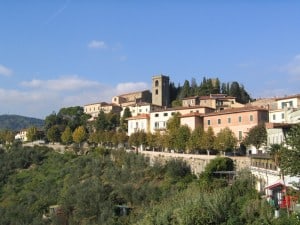 One of the highlights of my visit to Montecatini-Terme in Italy this summer was exploring the Viale Verde in the medieval town of Montecatini-Alto. It’s also known as the Vialone dei Bagni and along this street there are a number of sights worth exploring.
One of the highlights of my visit to Montecatini-Terme in Italy this summer was exploring the Viale Verde in the medieval town of Montecatini-Alto. It’s also known as the Vialone dei Bagni and along this street there are a number of sights worth exploring.
The town is actually very small, and all of its sights are located in the same area, on the main street, the Viale Verde, which made it really easy to see everything important. One of the most famous sights here is the Palazzino Regia, a sober looking building that used to be the summer residence of the Medici family. Also located in the street we discovered the Royal Park, which is opposite the Town Hall. Here we can visited the War Memorial, a fine monument created by Giuseppe Petroni.
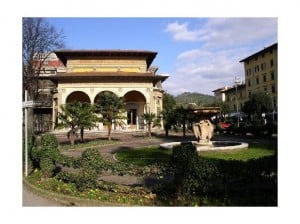 We also spent some time exploring the Town Hall, which is located on the right-hand side of the Viale Verdi. It was built between 1913 and 1919 and is located where the Grand Ducal stables once stood. The Viale Verdi provided the city with a centre and this is also where the city’s civic representative was located. This was a way for the city to show that it was thriving and successful.
We also spent some time exploring the Town Hall, which is located on the right-hand side of the Viale Verdi. It was built between 1913 and 1919 and is located where the Grand Ducal stables once stood. The Viale Verdi provided the city with a centre and this is also where the city’s civic representative was located. This was a way for the city to show that it was thriving and successful.
Also located on this main thoroughfare is the Padiglione dei Sali, or Pavilion of Salts, which is at the entrance of the Verdi Theatre. This fascinating sight used to be a kiosk where salts were sold in the early 20th Century. Today it’s home to a number of different businesses.
Viale Verde leads all the way from the town’s main square, called Piazza Popolo to the spas and the Royal Park located along one side of it. The other side of the street is lined with a number of different shops, cafes and restaurants, as well as two different theatre, a tourist office and the historic Gran Café Gambrinus, a lively café that we spent some time at. We sat there at a table on the pavement, people-watching and enjoying some refreshment. It was great fun!
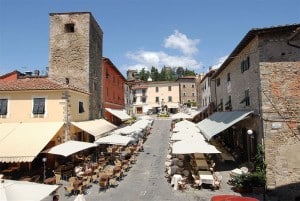 There is certainly a lot to explore on this historic main street, and I suggest that you really take your time discovering its magic. We learned a lot about the Dei Medici family and explored their ancient castle as well as the magnificent park and the Town Hall. We even went shopping at the historic Pavilion of Salts. Montecatini-Alto is a charming medieval town and I recommend spending the day or at least a morning exploring its delights.
There is certainly a lot to explore on this historic main street, and I suggest that you really take your time discovering its magic. We learned a lot about the Dei Medici family and explored their ancient castle as well as the magnificent park and the Town Hall. We even went shopping at the historic Pavilion of Salts. Montecatini-Alto is a charming medieval town and I recommend spending the day or at least a morning exploring its delights.
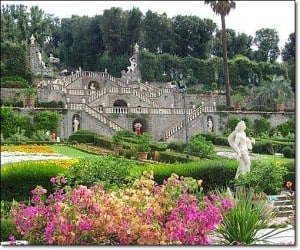 On a recent trip to Italy, Sharon Preston visited the magnificent butterfly-filled garden surrounding the ancient Villa Garzoni in Montecatini Terme
On a recent trip to Italy, Sharon Preston visited the magnificent butterfly-filled garden surrounding the ancient Villa Garzoni in Montecatini Terme
One of the most popular sights in Montecatini Terme is the magnificent garden that surrounds the ancient Villa Garzoni, a palace built by the Garzoni family during the 17th Century. The gardens are famous all over Europe as they are quite spectacular and feature a number of water features, terraces, geometrical flowerbeds, staircases and statues. They are also home to some of the most beautiful butterflies I have ever seen.
In fact, the exquisite gardents are one of the gardens’ main attractions and whilst you’re exploring, you’ll see hundreds of them flying around. There are around 800 butterfly species from all over the world found in the gardens, and they all live in the Collodi Butterfly House, which was the first Butterfly House to be established in Italy. It was opened in 2007 by the Carlo Collodi Foundation, hence its name.
 The Butterfly House contains different habitats that mimic the temperatures and terrain of various regions around the world, including the Amazon, the tropical African jungle and Indo-Australian regions. And there in the Butterfly House, these exquisite specimens breed, feed and court each other, just like they do in their own habitats.
The Butterfly House contains different habitats that mimic the temperatures and terrain of various regions around the world, including the Amazon, the tropical African jungle and Indo-Australian regions. And there in the Butterfly House, these exquisite specimens breed, feed and court each other, just like they do in their own habitats.
The Butterfly House is actually a garden within the magnificent Garzoni Garden, and it contains special rare plants that duplicate the eco-systems and natural habitat of the various butterflies. When we visited, we learned everything there is to know about butterflies and saw every one of the butterfly’s developmental stages, including eggs, caterpillars, pupae and butterflies. We also saw a number of exquisite butterflies up close, some with wings boasting the most extraordinary colours and patterns.
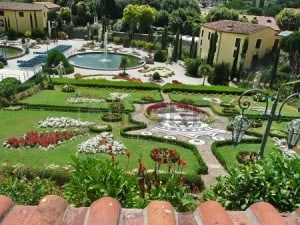 It was so fascinating to explore another world inhabited by such fragile, beautiful creatures. We learned that butterflies actually have a complex pattern of social behaviour and found out all about how they socialise and interact! The Butterfly House also contains a centre where rare species of insects and ants are displays. But I found the butterfly displays the most fascinating, and I spent most of the time I was there watching them.
It was so fascinating to explore another world inhabited by such fragile, beautiful creatures. We learned that butterflies actually have a complex pattern of social behaviour and found out all about how they socialise and interact! The Butterfly House also contains a centre where rare species of insects and ants are displays. But I found the butterfly displays the most fascinating, and I spent most of the time I was there watching them.
 I was amazed at the amount of detail and work that went into creating the exact eco-systems necessary for the butterflies to survive. These butterflies require special mineral salt nourishment in the soil, as well as particular plants that produce flowers that will nourish them, and the correct lighting, shade and temperature. It’s all very complicated, actually. But it was worth all the work that they have put in. To see these magnificent creatures up close, enjoying their home, was something I will never forget.
I was amazed at the amount of detail and work that went into creating the exact eco-systems necessary for the butterflies to survive. These butterflies require special mineral salt nourishment in the soil, as well as particular plants that produce flowers that will nourish them, and the correct lighting, shade and temperature. It’s all very complicated, actually. But it was worth all the work that they have put in. To see these magnificent creatures up close, enjoying their home, was something I will never forget.
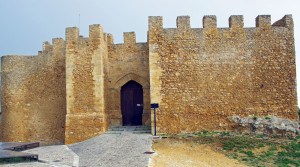 On a recent trip to Sicily, Sharon Preston visited the magnificent Naro Castle that dates all the way back to the Middle Ages
On a recent trip to Sicily, Sharon Preston visited the magnificent Naro Castle that dates all the way back to the Middle Ages
Naro is a picturesque area in the province of Agrigento on the island of Sicily which we explored at leisure one day on a recent visit to the island. The town of Naro itself has been around since the Middle Ages and we enjoyed a visit to its medieval castle, which is located on a site that dates all the way back to Roman times. When the town was founded, the district of Naro was an important centre in the region, so it has a lot of historic significance.
In the present day, Naro is an agricultural centre, but its ancient castle remains as a reminder of days gone by. It was built in the 14th Century by the famous Italian Chiaramonte family – for this reason it’s also known as Castle Chiaramontano. And the hill on which it is located, which has been inhabited since Roman times, used to be called Mount Agragante.
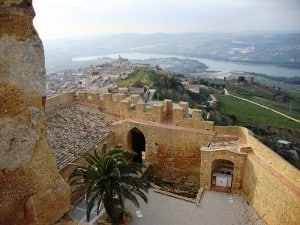 Although the castle has been refurbished and remodeled over the centuries, we were able to see some of the original parts of the structure, including the walls with battlements and the square tower built by Frederick the Second of Aragon. On the tower’s eastern side are two typical Gothic mullioned windows that light up the interior of the great Prince Hall, which is located on the first floor of the tower. And seeing the great hall was truly a highlight of my visit there.
Although the castle has been refurbished and remodeled over the centuries, we were able to see some of the original parts of the structure, including the walls with battlements and the square tower built by Frederick the Second of Aragon. On the tower’s eastern side are two typical Gothic mullioned windows that light up the interior of the great Prince Hall, which is located on the first floor of the tower. And seeing the great hall was truly a highlight of my visit there.
The entrance is a pointed arch flanked on either side by a rectangular bastion and inside the walls is a large courtyard with a well in the centre. Underneath it is a large carved cistern that was sometimes used as a prison. In its heyday, the courtyard also contained accommodation for the garrison, a chapel and stables.
There’s quite a lot to see inside the castle, which was declared a national monument in 1912. It’s been magnificently restored and two levels of the Aragonese Tower are home to a museum and a restoration workshop which we enjoyed exploring at leisure. In the museum itself I particularly enjoyed seeing displays of dresses worn by local noblewomen between the 19th and early 20th Centuries.
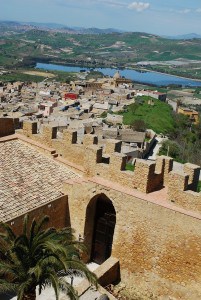 We also got to see the boundary wall and walk along the ramparts – and I must tell you, the view from up there is quite spectacular, so make sure you have your camera on hand. And then we explored the interior of the castle, which was great fun. All in all, we had a great time exploring this ancient castle and I highly recommend it to anyone who is visiting Sicily this summer.
We also got to see the boundary wall and walk along the ramparts – and I must tell you, the view from up there is quite spectacular, so make sure you have your camera on hand. And then we explored the interior of the castle, which was great fun. All in all, we had a great time exploring this ancient castle and I highly recommend it to anyone who is visiting Sicily this summer.
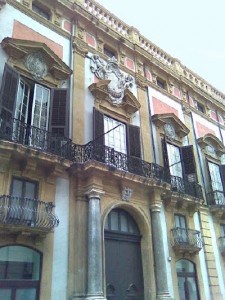 Whilst exploring Sicily recently, Sharon Preston discovered some magnificent castles. The Palazzo Trigona was her favourite
Whilst exploring Sicily recently, Sharon Preston discovered some magnificent castles. The Palazzo Trigona was her favourite
One of the highlights of my visit to Sicily was visiting the ancient Palazzo Trigona, located in Piazza Armerina, also known as Piazza Duomo, because this is where the town’s cathedral is located. The Trigona family, who built the palace as their home, chose this location, because they were also responsible for building much of the Duomo themselves. In fact, there’s a statue of the member of the Trigona family who built the Duomo in the centre of the square. Aside from the castle you’ll also find an art gallery in the square that boasts some paintings by famous artists including Caravagggio, Carlo Dolic, Faggini and Canaletto. It’s well worth exploring once you’ve finished exploring the castle.
The castle, which was built between the 18th and 19th Centuries, has recently been restored to its former glory and is now used as an hotel. The hotel offers a choice of 13 rooms and two suites and its guests include people from all over the world who come to stay here, to relax and step back in time to a more glamorous, elegant era.
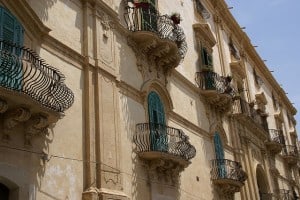 Palazzo Trigona is located less than a kilometer from the town’s famous archaeological sites, so it’s the ideal base from which to explore. The hotel’s public areas are particularly beautiful, and we explored those at leisure, including a living room with a fireplace and a small library. I think that next time I visit Sicily I’d like to escape the busy tourist sights on the island and stay in this beautiful old palace. It would be the perfect place to get away from it all in old-world surrounds.
Palazzo Trigona is located less than a kilometer from the town’s famous archaeological sites, so it’s the ideal base from which to explore. The hotel’s public areas are particularly beautiful, and we explored those at leisure, including a living room with a fireplace and a small library. I think that next time I visit Sicily I’d like to escape the busy tourist sights on the island and stay in this beautiful old palace. It would be the perfect place to get away from it all in old-world surrounds.
The setting is quite magnificent, with lots of lush trees around the building and although we did spend time exploring the grounds, I would love to come and stay there and be able to enjoy many leisurely walks discovering the magic of the surroundings as well as enjoying some horse riding and mountain climbing.
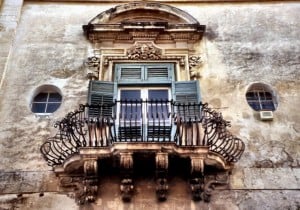 The main façade of the palazzo is quite spectacular, with a series of large windows and the balcony above them. It’s an excellent example of 18th Century architecture. And if you are lucky and the hotel is not fully booked, you may be able to explore some of the hotel rooms as well as the public areas. That would give you an idea of how much fun it would be to stay at such a stunning hotel.
The main façade of the palazzo is quite spectacular, with a series of large windows and the balcony above them. It’s an excellent example of 18th Century architecture. And if you are lucky and the hotel is not fully booked, you may be able to explore some of the hotel rooms as well as the public areas. That would give you an idea of how much fun it would be to stay at such a stunning hotel.
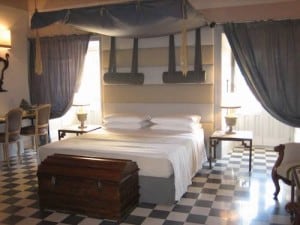 And if you do book a room there, perhaps I’ll see you there next summer, when I enjoy the luxury of staying in a famous ancient palace in the heart of Sicily. I can imagine no better way to enjoy la dolca vita.
And if you do book a room there, perhaps I’ll see you there next summer, when I enjoy the luxury of staying in a famous ancient palace in the heart of Sicily. I can imagine no better way to enjoy la dolca vita.
Sharon Preston recently visited Sicily and discovered many of its treasures. Another gem that she enjoyed visiting was the Church and Monastery of the Holy Spirit, also known as Santo Spirito
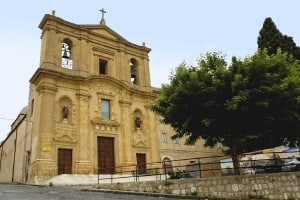 One of the highlights of my visits to Sicily was a visit to the Church and Monastery of the Holy Spirit, or Santo Spirito, located in Agrigento. The complex was built by the Chiaramonte family who was the most powerful family in Sicily in 1299. The façade is made up of a great Gothic entrance, a pointed arch and a rose window that was created at the beginning of the 14th Century when the complex was first built.
One of the highlights of my visits to Sicily was a visit to the Church and Monastery of the Holy Spirit, or Santo Spirito, located in Agrigento. The complex was built by the Chiaramonte family who was the most powerful family in Sicily in 1299. The façade is made up of a great Gothic entrance, a pointed arch and a rose window that was created at the beginning of the 14th Century when the complex was first built.
Of course, the church and the monastery were both remodeled a number of times since they were first built. In fact, the top floor of the church and the three tower bells were only added in the late 17th Century. The monastery next to it comprises two storeys, and is made from sandstone and limestone, creating a lovely two-tone effect. When we entered the complex to explore, we walked down a long exterior hallway, from where were able to see the cloister located on the left.
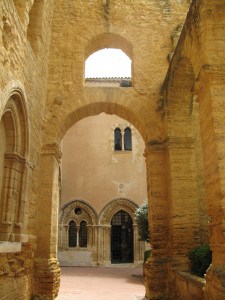 There’s a garden with a central fountain and two 14th Century arches that support the wall of the church, which is located next to the monastery. On the ground floor are three rooms – the chapel, a Refectory and the Chapter House, which we entered through a beautiful doorway flanked by two large mullioned windows. Inside, the chapel is square and its ceiling is covered with a cross vault.
There’s a garden with a central fountain and two 14th Century arches that support the wall of the church, which is located next to the monastery. On the ground floor are three rooms – the chapel, a Refectory and the Chapter House, which we entered through a beautiful doorway flanked by two large mullioned windows. Inside, the chapel is square and its ceiling is covered with a cross vault.
The chapel, which is rectangular in shape, boasts a single nave. Its interior is completely in the Baroque style and includes the choir in front, supported by four columns. On the walls behind the main altar is a series of white sculptures by Giacomo Serpotta portraying episodes from the New Testament, including the Nativity, the Adoration of the Magi, the Presentation in the Temple and the Flight into Egypt.
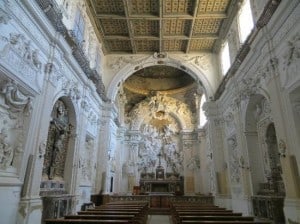 There are more statues to be found in the bottom of the central wall, including the figures of Saint Benedict and Saint Bernard, the dove of the Holy Spirit and God the Father. Also in the chapel is a statue of the Madonna with child, a crucifix and a marble group of statues depicting the Madonna handing the rosary to a saint.
There are more statues to be found in the bottom of the central wall, including the figures of Saint Benedict and Saint Bernard, the dove of the Holy Spirit and God the Father. Also in the chapel is a statue of the Madonna with child, a crucifix and a marble group of statues depicting the Madonna handing the rosary to a saint.
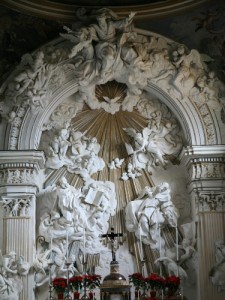 The reason why I found this sight so fascinating is that it is the best known of all the remaining medieval monuments in Agrigento. It’s been the property of the city of Agrigento since 1916 and is now home to the Civic Museum, which we also got to explore to see displays of a number of different items and crafts that were used in this area a Century ago.
The reason why I found this sight so fascinating is that it is the best known of all the remaining medieval monuments in Agrigento. It’s been the property of the city of Agrigento since 1916 and is now home to the Civic Museum, which we also got to explore to see displays of a number of different items and crafts that were used in this area a Century ago.
I recommend a visit to Santo Spirito. It really is one of the most exquisite churches I have seen in my travels.
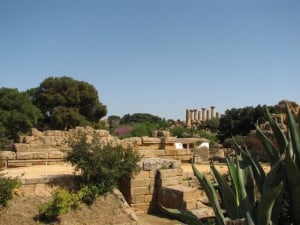 Sharon Preston finds some ancient Greek history in Italy, the magnificent Hellenistic-Romanto Quarter in Agrigento in Sicily
Sharon Preston finds some ancient Greek history in Italy, the magnificent Hellenistic-Romanto Quarter in Agrigento in Sicily
If one really wants to see beautiful, authentic Greek ruins, the best place to see them, believe it or not, is in Sicily. In Agrigento to be exact. The region’s Hellenistic-Romano Quarter is home to some of the very best examples of Greek structures, the remains of a Roman neighborhood built on top of the original Greek urban plan, as well as the area’s excellent archaeological museum.
Let me give you a little bit of background about Agrigento. It was founded as a Greek colony in the 6th Century BC and became one of the leading cities in the Mediterranean world. Today visitors come to see the remains of magnificent Doric temples that existed here in that ancient town, much of which is still lying intact under fields and orchards.
Certain sites have been excavated and these give us an excellent idea of the town that once existed there as well as the burial practices of the early Christians who lived in the town. To find such an intact, well-preserved ancient city is quite a phenomenom and the Doric temples here are some of the most incredible monuments that still exist of Greek culture.
The original Greek town, called Akragas, was founded by people who used to live in Rhodes and Crete around 580BC. The city had a tumultuous past, and finally fell under Roman rule in 262BC. It became part of the Roman Empire in 210BC and for a long time, Agrigento was the only market town on Sicily’s southern coast. But after this Christianity took over, and the city lost most of its inhabitants.
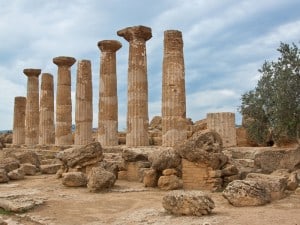 The area is called the Valley of the Temples and it covers most of the central part of the ancient city and its public monuments. The area between the Acropolis and the temples was created in the 5th Century BC and the sacred area was built in the second half of the 6th Century BC.
The area is called the Valley of the Temples and it covers most of the central part of the ancient city and its public monuments. The area between the Acropolis and the temples was created in the 5th Century BC and the sacred area was built in the second half of the 6th Century BC.
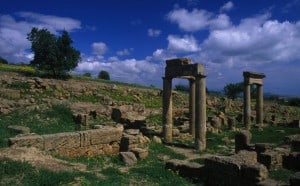 I found the remains of the temples built during the reign of Thero to be most fascinating. These are dedicated to various gods, including Herakles, Zeus and Concord. Very little remains of the Temple of Olympian Zeus, which is sad as it was one of the biggest Greek temples. Also located here is the Temple of Concord, an impressive Doric temple that is very well preserved as it was used as a church in the 6th Century. It was built at the same time as the Temple of Concord. The Temple of Hera Lacinia is also here.
I found the remains of the temples built during the reign of Thero to be most fascinating. These are dedicated to various gods, including Herakles, Zeus and Concord. Very little remains of the Temple of Olympian Zeus, which is sad as it was one of the biggest Greek temples. Also located here is the Temple of Concord, an impressive Doric temple that is very well preserved as it was used as a church in the 6th Century. It was built at the same time as the Temple of Concord. The Temple of Hera Lacinia is also here.
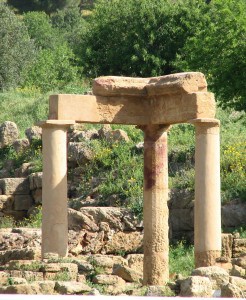 There’s also the Temple of Herakles and a number of other fascinating temples. I also managed to see a some ancient cemeteries including the Tomb of Theron, which was built in early Roman times.
There’s also the Temple of Herakles and a number of other fascinating temples. I also managed to see a some ancient cemeteries including the Tomb of Theron, which was built in early Roman times.
After a whistle-stop trip to Antwerp, Sharon Preston describes the highlight of her sightseeing, a visit to Ruben’s House
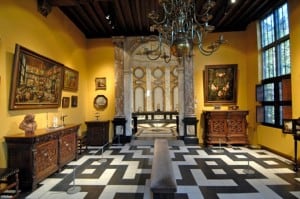 The house where the famous artist Peter Paul Rubens lived and worked in the 17th Century, called Ruben’s House, is one of the most important sights to see in Antwerp. It’s actually a very luxurious home – Reubens certainly did not live the life of a starving artist! He earned a fortune from his paintings, enough to build this impressive mansion in 1610 at the age of 33. Today the house is a museum dedicated to the Baroque artist, his work and his life. He lived here for quite a long time – from 1610 until he died in 1640.
The house where the famous artist Peter Paul Rubens lived and worked in the 17th Century, called Ruben’s House, is one of the most important sights to see in Antwerp. It’s actually a very luxurious home – Reubens certainly did not live the life of a starving artist! He earned a fortune from his paintings, enough to build this impressive mansion in 1610 at the age of 33. Today the house is a museum dedicated to the Baroque artist, his work and his life. He lived here for quite a long time – from 1610 until he died in 1640.
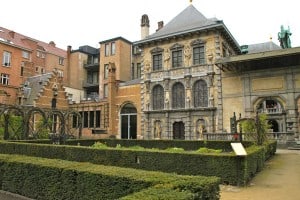 Aside from the magnificent mansion, the beautiful ornamental Flemish-Italian style Renaissance garden is well worth exploring. It was designed by the artist himself and is quite magnificent. Inside the house , the rooms offer an excellent insight into what life was like for a wealthy Belgian in the early 17th Century.
Aside from the magnificent mansion, the beautiful ornamental Flemish-Italian style Renaissance garden is well worth exploring. It was designed by the artist himself and is quite magnificent. Inside the house , the rooms offer an excellent insight into what life was like for a wealthy Belgian in the early 17th Century.
A number of Ruben’s works are on display in the house, as well as works by other masters who were his contemporaries. In the dining room there’s a self-portrait painted by Rubens when he was 47 years old, and another of Anthony Van Dyck as a boy. Rubens also collected Rolman sculpture, and some of the pieces that I saw are also actually featured in his paintings.
Rubens painted many of his celebrated artworks here in this house, including one called ‘Adam and Eve in Paradise’ and another called ‘Henry the Fourth in the Battle for Pairs’, both of which are on display.
I also managed to see a number of the artist’s personal possessions and objects d’art.
Sadly, the house was badly neglected for many years, but the city of Antwerp bought the house in 1937 and completely renovated it. It’s been superbly restored and is now one of Antwerp’s most famous attractions. The only original parts of the structure are the impressive doorway that used to connect the studio and the artist’s living quarters. The rest had to be reconstructed using original plans and paintings of the house.
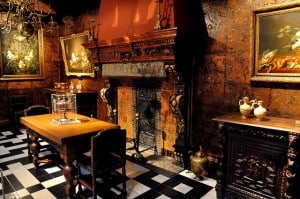 The building is divided into two sections – on the left is artist’s living quarters and an elaborate art gallery where Rubens used to display sculptures and paintings of artists who he admired. Then, on the right is Rubens’ studio, where he worked and taught.
The building is divided into two sections – on the left is artist’s living quarters and an elaborate art gallery where Rubens used to display sculptures and paintings of artists who he admired. Then, on the right is Rubens’ studio, where he worked and taught.
Interestingly enough, many rich and famous people came to visit Rubens in his sumptuous home. Some were his friends, and many were clients, wealthy merchants, diplomats and aristocrats, even Royalty.
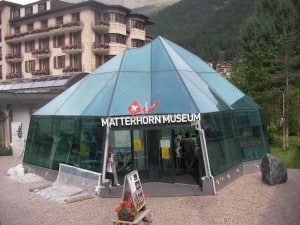 Visiting the Matterhorn Museum is unlike visiting any other museum in Europe. It’s a completely unique experience, where you step into an underground world to experience the magic of Zermatt as it was in ancient times. The experience also reveals the legend of the Matterhorn and how this shaped Zermatt into the city that it is today.
Visiting the Matterhorn Museum is unlike visiting any other museum in Europe. It’s a completely unique experience, where you step into an underground world to experience the magic of Zermatt as it was in ancient times. The experience also reveals the legend of the Matterhorn and how this shaped Zermatt into the city that it is today.
This unique experience is created by using state-of-the-art technology. You descend into what they call Zermatlantis, a make-believe excavation in Zermatt. In the story, the researchers have taken a break and you are secretly entering the world they have just discovered underground. And there you experience the legend of the Matterhorn!
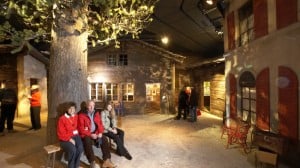 The main theme of the museum is, of course, the Matterhorn. The museum has been created to look like an authentic 18th Century Valaisan village made up of 14 different buildings, including a church, hotel, huts and granaries. Through the story of this village, visitors get an interesting insight into events revolving around the Matterhorn, including mountaineering, and the lives of those who died trying to climb the mountain.
The main theme of the museum is, of course, the Matterhorn. The museum has been created to look like an authentic 18th Century Valaisan village made up of 14 different buildings, including a church, hotel, huts and granaries. Through the story of this village, visitors get an interesting insight into events revolving around the Matterhorn, including mountaineering, and the lives of those who died trying to climb the mountain.
You get to see letters written by Franklin D Roosevelt, boots worn by Raymond Lambert, and even the broken rope from the first attempt at climbing the Matterhorn in 1865.
Another fascinating sight in the museum is one of the two stones that were collected from the mountain summit by Claude Nicollier, that he took with him on the Space Shuttle Endeavour STS-61 mission in 1993. The other stone was returned to the Matterhorn.
 The museum offers a most novel opportunity to learn about the mountain’s history! Visitors wander through authentic mountain huts. You can even hear the wind blowing so that you can envisage what it is like to be climbing the Matterhorn. Many people have managed to climb the Matterhorn since Edward Whimper first climbed up a century and a half ago.
The museum offers a most novel opportunity to learn about the mountain’s history! Visitors wander through authentic mountain huts. You can even hear the wind blowing so that you can envisage what it is like to be climbing the Matterhorn. Many people have managed to climb the Matterhorn since Edward Whimper first climbed up a century and a half ago.
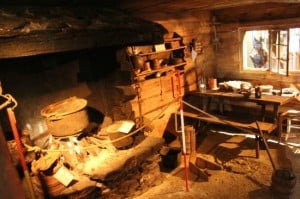 The museum takes you through the arrival of a group of British mountaineers who wished to conquer the magnificent Matterhorn, which had never been climbed before. You will watch seven people starting off, and reaching the summit. And you will see when tragedy struck during their descent.
The museum takes you through the arrival of a group of British mountaineers who wished to conquer the magnificent Matterhorn, which had never been climbed before. You will watch seven people starting off, and reaching the summit. And you will see when tragedy struck during their descent.
Sadly, one of the exhausted mountaineers slipped, and pulled three of his companions into the abyss with him. Only three out of the seven managed to save themselves with the aid of the safety rope – they were the two mountain guides and the Scottish mountaineering legend, Edward Whymper.
That’s not all you will learn at this fascinating museum. You will find out all about the hardships people faced living in Zermatt in the middle of the 18th Century, and how their fortunes changed when Zermatt became a popular tourist destination and a famous health resort.
One of the joys of visiting Amalfi is discovering the magic of the magnificent Emerald Cave, or Grott
a dello Smeraldo, which is located on the coastline. Sharon Preston waxes lyrical after a visit…
The famous Emerald Cave is one of several caves around the world that emits a magnificent blue, or emerald light, depending on the time of day. The quality of the color in each of these caves depends on the natural lighting that filters into the cave. And in the case of this most famous one, it appears a brilliant emerald hue.
The Emerald Grotto is actually located between the towns of Amalfi and Positano that sit along the spectacular 40-mile Amalfi Coastline. This beautiful grotto is partially filled with sea water, which apparently accounts for the glorious emerald colour. The surface area of the water covers around 49 by 35 yards and the roof of the cave is 79 feet high above the level of the water.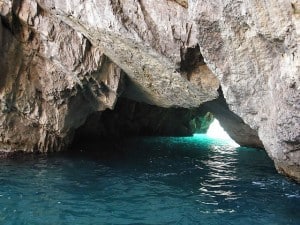
Unlike the famous Blue Grotto which is located just outside Capri, the Emerald Cave has no natural outlet above the waterline. The only opening is just below the level of the water. Refracted sunlight enters the cave through the opening and gives the grotto its characteristic emerald glow.
As a result of the natural opening to the cave being above the waterline, the cave’s existence was a secret for many years. In fact, this emerald treasure was only discovered in 1932 by a fisherman called Luigi Buoncore.
When you visit the cave on an excursion, you will be able to access the cave from Strada Statale, the main road that runs along the Amalfi coast. You have to take an elevator down to cave level, where you will board a boat that will take you through the grotto on a journey of discovery.
On the boat, the guide explains how the effect of the shimmering green-coloured water is created by a secret tunnel that allows the light to filter from deep below the surface. You will also see colorful stalactites and stalagmites that are up to 10 meters high. And there’s a nativity scene below the water that mysteriously appears and then drifts away again, making it quite a surreal experience.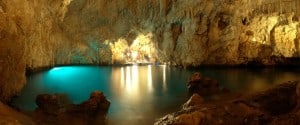
The guide also explains the history of the cave while you are exploring on the boat. When you’re on the boat, remember to take a look at the water – it’s so clear that you will be able to see right to the bottom, 32 feet below. I promise you – the colour of the water is so magnificent that it will take your breath away.
.